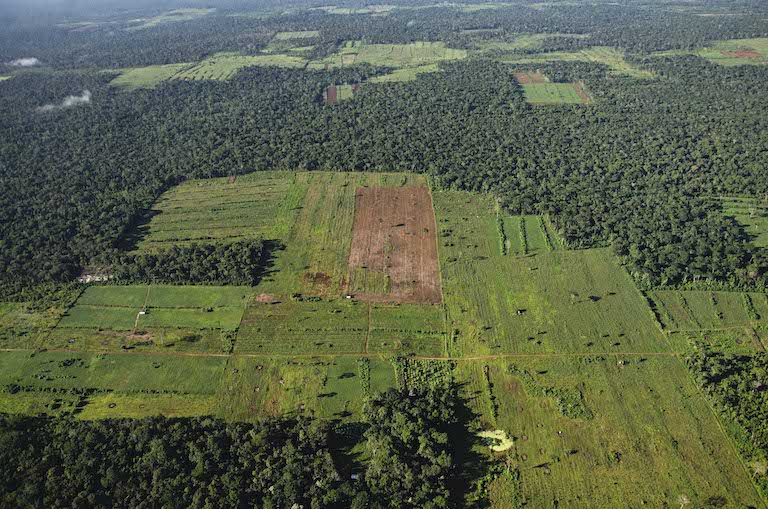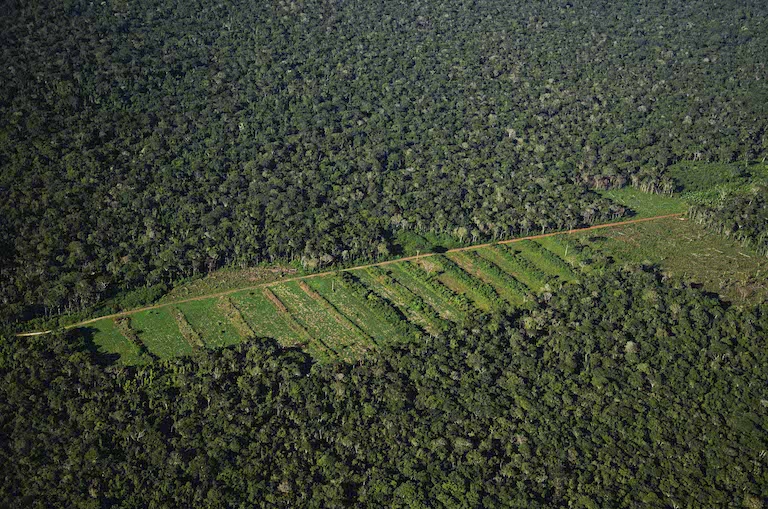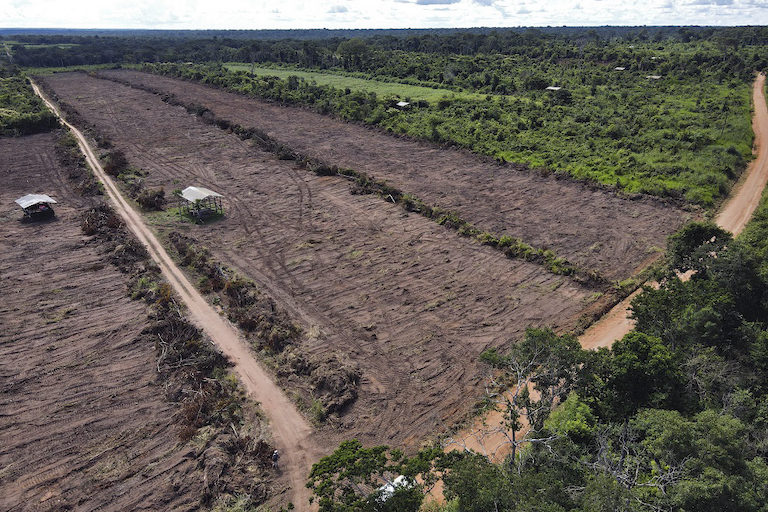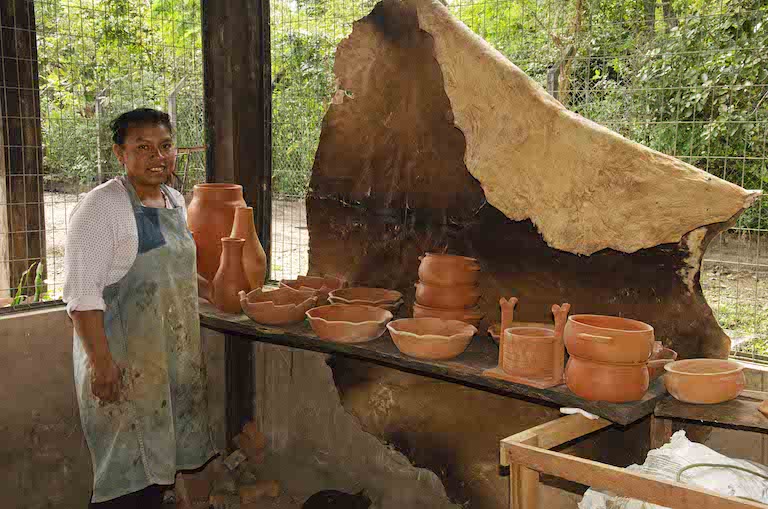Forests for sale: How land traffickers profit by slicing up Bolivia’s protected areas
Nov 25, 2021
- Shortly after Bolivia’s Bajo Paraguá Municipal Protected Area was established in February 2021, authorities began receiving reports of invasions and deforestation in and around the new protected area.
- Local sources say land traffickers are illegally buying up plots of protected land to resell, often repeatedly, to third parties.
- Mongabay spoke with one of these third parties, a man who said he purchased access to land in Bajo Paraguá from land traffickers before being evicted by the same traffickers so that they could sell the land to someone else.
- The man said traffickers have resorted to threats of violence to intimidate local communities from reporting incursions.
SAN IGNACIO DE VELASCO, Bolivia — On Feb. 12, 2021, Bolivian conservationists joyfully celebrated the creation of the Bajo Paraguá Municipal Protected Area. Located in the municipality of San Ignacio de Velasco in the Bolivian department of Santa Cruz, the new reserve was established to protect 983,006 hectares (2.4 million acres) of Amazonian and Chiquitano forest.
The news was celebrated internationally. U.S. actor and environmental activist Leonardo DiCaprio who wrote on his Instagram account: “This is encouraging news for the wealth of wildlife these areas support, and also for the Chiquitano and Guarasugwe Indigenous groups that live within the areas and depend on the forests for their livelihoods.”
But the celebrations were short-lived. Just a few days after Bajo Paraguá was established, reports of continuing deforestation and colonization inside the new protected area began filtering to regional authorities. Local sources said that what was once lush forest filled only with the sounds of wildlife was suddenly overpowered by the noise of tractors and chainsaws as trees began to fall.

One man, Miguel Ángel*, who lives near Bajo Paraguá, claims he was one of these invaders. On a warm, windy day in May, Ángel settled under the shade of a mango tree next to a lake near the San Ignacio de Velasco dam to speak to Mongabay reporters about how land trafficking mafias operate. He agreed to the interview on condition of anonymity out of fear for his safety.
An illegal, dangerous land rush
According to Ángel, the land trafficking process begins when would-be traffickers organize a group of 20 to 30 people called “interculturales,” who request land ownership titles through the National Institute of Agrarian Reform (INRA). Hidden among the applicants are the traffickers, who falsify identity documents and use false names.
“If 20 people apply, 2 or 3 will act in bad faith,” Ángel said. “They falsify documents and all that.”
According to Ángel, traffickers then turn around and charge third-party buyers 20,000 to 30,000 Bolivianos ($2,873 to $4,310) for access and ownership titles to tracts of land up to 50 hectares in size.
Ángel said the amount they charge depends on criteria such as the distance to access points, improvements such as previous clearing activity and existing infrastructure.

Ángel said he and his father were tricked by land traffickers who charged them 30,000 bolivianos (approximately $4,353) to access a portion of land in San Ignacio de Velasco. ‘’Later we realized, that these people (traffickers) had no crops in the area, and their main interest was to sell the land,’’ he told Mongabay.
According to Ángel, traffickers often sell land to people from other departments, mostly to those from the Andean region of Bolivia, such as Cochabamba, Potosí and Oruro, and even to residents of other countries. He said that before establishing a permanent physical presence in the area, traffickers slash and burn standing forest and put up signs that purport the site to be occupied by communities.
Ángel said traffickers sometimes exert pressure and make threats against settlers to whom they illegally sold land by imposing restrictive rules on farming practices and the distribution of crop earnings in the hopes that settlers will breach those rules and can be evicted.
“Without any fear, [the traffickers] begin to evict people […] one, two, five or ten people, and then they recruit other families to replace them, seeking payment for a second time,” Ángel said, adding that traffickers will ultimately sell the land to businessmen or foreigners, and then start looking for more protected, public land elsewhere and start the process all over again.
Ángel said he was ultimately accused of land trafficking by the same traffickers who had scammed him in an effort to evict him from his parcel near Bajo Paraguá. But he said he was later found innocent by the Bolivian justice system.
In addition to eviction, Ángel claimed land traffickers have also made death threats to community members.
“[The traffickers] avoid the law and go unpunished because people don’t report them as they fear for their lives,” Ángel said.

Traffickers take advantage of institutional weaknesses, according to Ángel who claimed that the INRA has neglected to conduct required inspections when transferring land titles.
“[INRA] technicians must visit the communities to carry out the corresponding inspections; however, they do the work from the office and issue land titles with ease,” Ángel said.
A growing threat
A 2016 study published in the journal Tropical Conservation Science and conducted by Noga Shanee and Sam Shanee, researchers from the Neotropical Primate Conservation Association, defines land trafficking as “the usurpation, illegal appropriation and commerce of lands” and states it comes in two forms. The first occurs when landless villagers arrive in an area and prepare the land (through slash-and-burn deforestation, for example) in order to settle or sell it. The group often then requests essential services from the local authorities such as the construction of roads, water services, schools and hospitals.
The second type of land trafficking, according to the study, involves “professional traffickers” who have no intention of settling or working the land themselves. The Shanees write that these groups seek to legitimize themselves by operating in conjunction with officials who are often corrupt.
“Traffickers sell lands to groups which later work the land, some for quick sale and some to settle,” the authors write in their study.
Although the Shanees’ study took place in northeastern Peru, multiple sources who live in the municipality of San Ignacio de Velasco, including Ángel, told Mongabay that both types are also occurring in Bajo Paraguá and other areas of the Chiquitania region.
In their study, Noga and Sam Shanee write that land trafficking is linked to both rural-rural and urban-rural migration “and can be seen as an activity that organizes and facilitates migration.”
Rony Roca, former council member of the Municipal Government of San Ignacio de Velasco, is concerned about increasing migration. He told Mongabay that “since the 2011 census, we’ve had a growth of 60%. We had 21,000 people living in San Ignacio de Velasco, and today we have more than 80,000.”
Roca said that before 2011, there were 140 primarily Indigenous communities in San Ignacio de Velasco. But now, he said, the municipality hosts more than 350 communities, the majority established by non-Indigenous colonists.
“It is a great concern for us,” Roca said. “It has cost us a lot to address all these new communities; they come with ministerial resolutions, but without any municipal coordination.”

Allegations of corruption
Land trafficking isn’t just a problem in the Chiquitania region. A publication published by the Tierra Foundation in April 2021 found that land trafficking has been intensifying in Bolivia since 2011. It also alleges the “INRA paralelo” – a group comprised of former civil servants and public officials – engaged in falsifying agricultural documents and “laundering” legal records to sell land to the highest bidder.
According to the Tierra Foundation, the INRA authorized more than 1,400 new communities to settle in the department of Santa Cruz between 2014 and 2019. But the foundation claims that many of these territories are “ghost communities” that are in the hands of land traffickers.
In November 2020, Tierra Foundation reported that 33,480 hectares (82,730 acres) in the department of Santa Cruz were irregularly granted to former Minister of Economy Branko Marinkovic, who was appointed during the tenure of interim President Jeanine Añez. On Aug. 4, 2021, during the administration of current President Luis Arce, the INRA announced the reversion of 26,000 hectares of that allotment, indicating that they had been illegally titled.
An analysis by nonprofit think tank InSight Crime found that the illegal trade in land titles in Latin America is facilitated through connections with government officials “who can give illicit deals a necessary veneer of legitimacy.”
“This has long been the case in Bolivia,” InSight Crime stated, referring to the arrest on Apr. 14, 2021, of former Rural Development and Land Minister Edwin Characayo for accepting a $20,000 bribe in exchange for acting “in favor of certain people seeking to acquire and clear land for agricultural purposes.” According to the police, that money was an advance payment on a much larger bribe of $380,000.
According to InSight Crime, this situation “brought to light how corrupt schemes related to land trafficking corruption have plagued successive governments, regardless of who is in office.”
Mongabay contacted INRA Santa Cruz departmental director Adalberto Rojas, but did not receive a response.
A vanishing home
Oswaldo Maillard, head of the Chiquitano Dry Forest Observatory of the Chiquitano Forest Conservation Foundation (FCBC), told Mongabay that the deforestation observed in the Bajo Paraguá area has a fishbone pattern. This type of deforestation consists of opening a gap (such as a road) and then clearing the forest on both sides.
Maillard and his colleagues from the FCBC are in charge of monitoring the Chiquitano Dry Forest. He said that “small tin houses began to appear in some areas. An indication that they would start clearing.”


Maillard said land traffickers have cleared approximately 150 hectares (370 acres) of Chiquitano forest in Bajo Paragua. “One could say it’s relatively low, but those are the first signs to continue clearing.”
The deforestation of Bajo Paraguá is just the tip of the iceberg. Zooming out, San Ignacio de Velasco had one of the highest rates of municipal deforestation in Bolivia in 2020. Since last year, 47,197 hectares (116,626 acres) of forest has been lost, half of which was illegally cleared, according to data from FCBC and the Forests and Lands Authority.
In 2020 Bolivia jumped up to third place in terms of primary forest loss, losing 276,883 hectares (684,192 acres) of primary forest, according to data from the University of Maryland visualized on Global Forest Watch.
Herman Vaca Poñé, a forest engineer who helped create Bajo Paraguá Municipal Protected Area, said that the reserve is a key wildlife corridor that connects to Noel Kempff Mercado National Park, one of the best-preserved parks in the Amazon Basin and a UNESCO World Heritage Site. He said conversion of Bajo Paraguá’s forestland to crop fields is a shortsighted endeavor.


“Bajo Paraguá is an area destined for forest production,” Vaca Poñé said. “If you change that land use to agriculture, you will probably have five to six years of production, and then the yield will drop, and the soil will compact.”
In his recent book, “A Perfect Storm in the Amazon Wilderness,” published by White Horse Press, researcher Tim Killeen writes that Indigenous people are the strongest and most effective defenders of the Amazon because the fight for their territories is existential: “If they lose their land, they will lose their identity and will cease to exist as a people. They know it because they survived a holocaust.”
What Killeen expressed in his book is reflected in the tears that ran down the face of Lorenza Poicheé, an Indigenous Chiquitana woman who spoke to Mongabay about deforestation in San Ignacio de Velasco in May 2021. “It hurts that we can no longer teach our children what our parents taught us.”

Arminda Gómez from the Indigenous community of San José de Campamento, near Bajo Paraguá, urged other Indigenous residents to remain a united front against land traffickers.
“If we don’t protect our culture, they will take it from us,” Gómez said, “and if we don’t make an effort to stay united as a Chiquitana culture, we’ll be in trouble.”
*Name has been changed to protect the identity of the source.
Reporting for this story was supported by a grant from the Weeden Foundation and the National Endowment for Democracy (NED)
Banner image by Eduardo Franco Berton for Mongabay.
Feedback: Use this form to send a message to the editor of this post. If you want to post a public comment, you can do that at the bottom of the page.